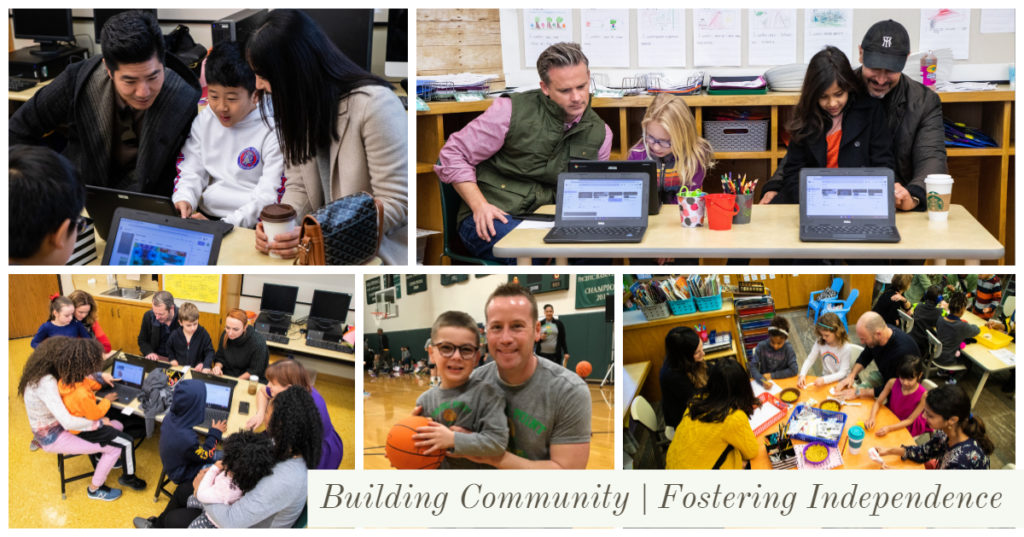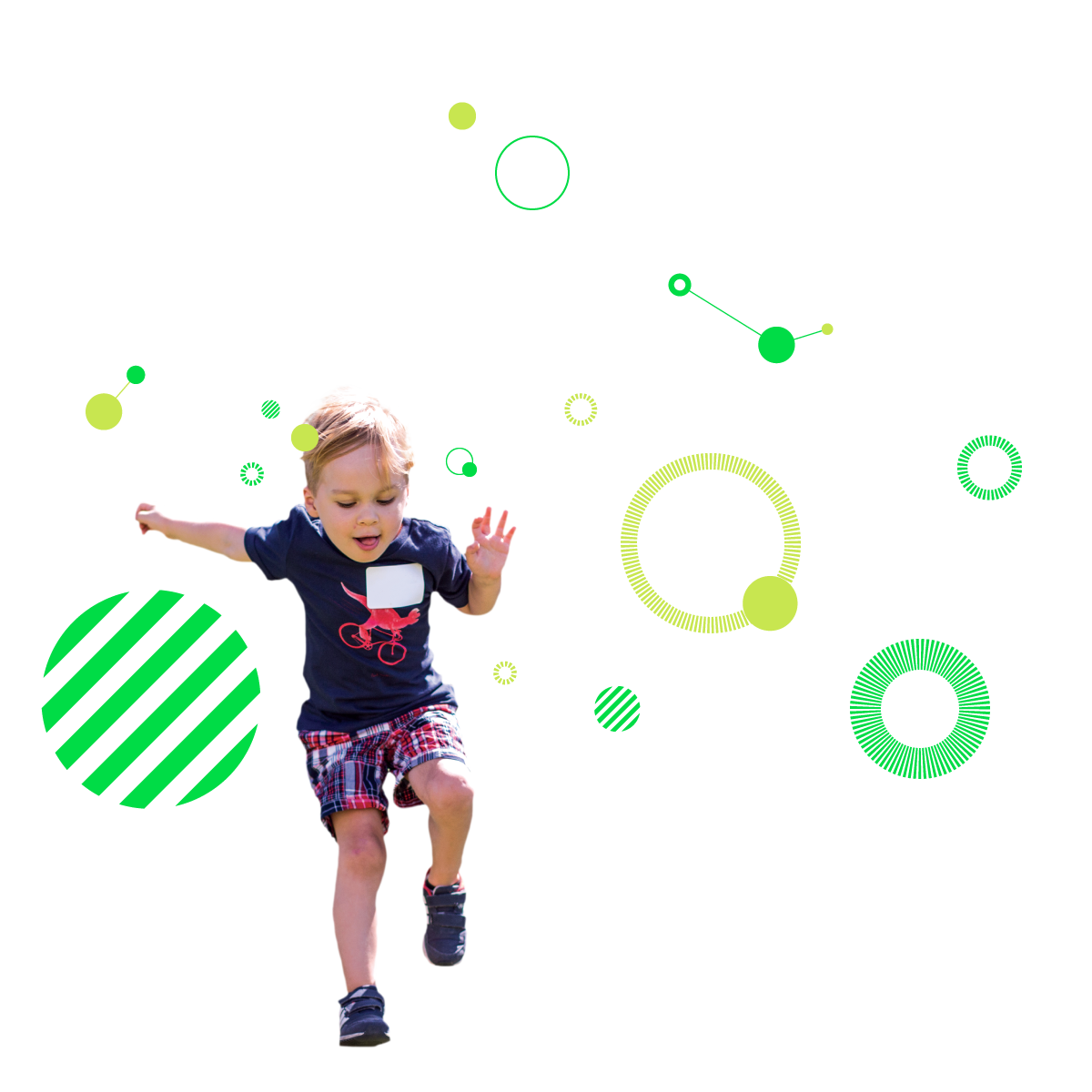
“Growing up is hard, but also necessary and unavoidable, so we might as well accept it and get down to the business of making snakes out of clay.” —Wendy Mogel, “The Whole Against the Sky”
Psychologist and The New York Times best-selling author Michael Thompson, who visited Turning Point earlier this year, notes that past generations of independent school parents dropped off their children at kindergarten and picked them up at 12th-grade graduation with little more than a wave in between. Turning Point School, like many other independent schools, has changed from merely being a place of learning where most students get dropped off and picked up without much contact between parents and teachers, to a place where not only children but adults shape students’ sense of community and belonging, and where parents have the opportunity to be known as well as their children.
What accounts for this sea change in schools? For one thing, our children have fewer opportunities to “free-range” as many of us did in our childhood. Non-stop news cycles dramatize and exaggerate highly sensationalized but low-probability occurrences such as abductions, which triggers our fears as parents and leads to a “better safe than sorry” mindset, causing us to hold our children closer and tighter.
Also, particularly in large urban areas such as ours, students in independent schools face the challenge of geographic diversity, so their “cohort” may no longer be kids who live down the street, but fellow students in one’s school. This holds true for parents, who often struggle to identify likeminded peers in their own neighborhoods. Today’s independent school parent experiences school as a warm, welcoming haven in an increasingly competitive and isolating world, and parents find and develop close friendships through schools more so than other places.
As educators in today’s independent school landscape, we love this opportunity to expand our partnership with parents and caregivers and to invite you into the fold. It is difficult to build a home-school partnership if our paths rarely cross! We deeply treasure the relationship we have with parents, and we purposefully create many opportunities to share time with you, for you to share time with your children, and for us all to come together as a community to learn, grow, share, and bond.
However, there are pitfalls if we are not thoughtful about the possible ramifications of our closely-knit community. An important purpose of school is to help children become independent—and interdependent—adults, which involves creating distance between one’s self and one’s caregivers in order to develop identity. We must, as psychologist and author Wendy Mogel states, practice the “art of separation.”
Certainly our caution and surveillance ensure that our children are protected but, consequently, it can also leave them hesitant and unconfident in unfamiliar environments. If we expect our kids to be brave, develop coping skills, learn how to fail spectacularly and bounce back, discover wayfinding skills, navigate their neighborhoods, and choreograph their days, we must provide them with opportunities to figure things out for themselves – even when it makes us itchy with the instinct to dive in and course-correct when the ship ventures into uncharted territory.
At Turning Point we are careful to balance the supervision of students with opportunities for them to practice these skills. This means we must relinquish our own control to some degree and allow students to work things out for themselves before jumping in.
A colleague recently told me of an outing with her five-year-old niece to the Santa Monica Pier. Her niece begged to go on the bumper cars for the first time, proudly showing that she was just tall enough to ride the ride. Seeing the cars careen into each other, moving unpredictably around the rectangular space, my colleague instantly felt unsure, envisioning possible injury and certain tears at the end.
Reluctantly she said yes, watching her niece bound over to get buckled into her car. At first, my colleague watched helplessly as her niece’s car was bumped, bounced, and pushed around for nearly five minutes. At the very end, she figured out how to drive the car, and for 30 glorious seconds, she was actually in the game – moving forward, controlling her progress, and engaging equally with the other kids. When it was over, her niece ran to her all smiles, so proud of her accomplishment.
Four and a half minutes of what seemed like unending failure followed by 30 seconds of resounding success. If it hadn’t been an unstoppable ride at an amusement park, when do you think my colleague – or any of us – would have intervened? And which of these two experiences stuck with the child…the longer time of struggle, or the shorter time of achievement?
Of course, our children’s experiences cannot be always be boiled down to a simple ride, but “setting up the bumpers” is a helpful metaphor to think about what we, as adults, can do for our children as they test their boundaries and find their way. Our job is not to drive the car for them, but to ensure they are in a place where they can make mistakes safely, knowing that the path won’t always be easy or kind.
It is also important to remember that regression and phases are normal, and we find opportunities for children to reflect on their choices, to envision alternative behaviors and mindsets, and to assume responsibility for themselves and their peers. We look for ways to provide organic consequences and opportunities for restorative practices that address constructive ways to repair relationships that can be damaged by poor choices. These are among the “bumpers” we establish.
In the end, we want our children to see growing up as a positive, desirable process. We want them to bravely try something new, knowing that the range of emotion and experience can vary from frightening to fulfilling (for them and us). We want them to learn from every experience and have the latitude and encouragement to try, and try again when things get bumpy. It’s up to us adults to manage our anxieties, fears, and desires, which can often impede children’s confidence that we believe in their abilities to “ride the ride.”
Thank you for inviting me, and Turning Point School, to be such an essential part of this process with you and your children. We are so happy to be part of the same community, and honored to accompany you on this ride.
Warmly,
Laura
Dr. Laura Konigsberg
Head of School
lkonigsberg@turningpointschool.org


































